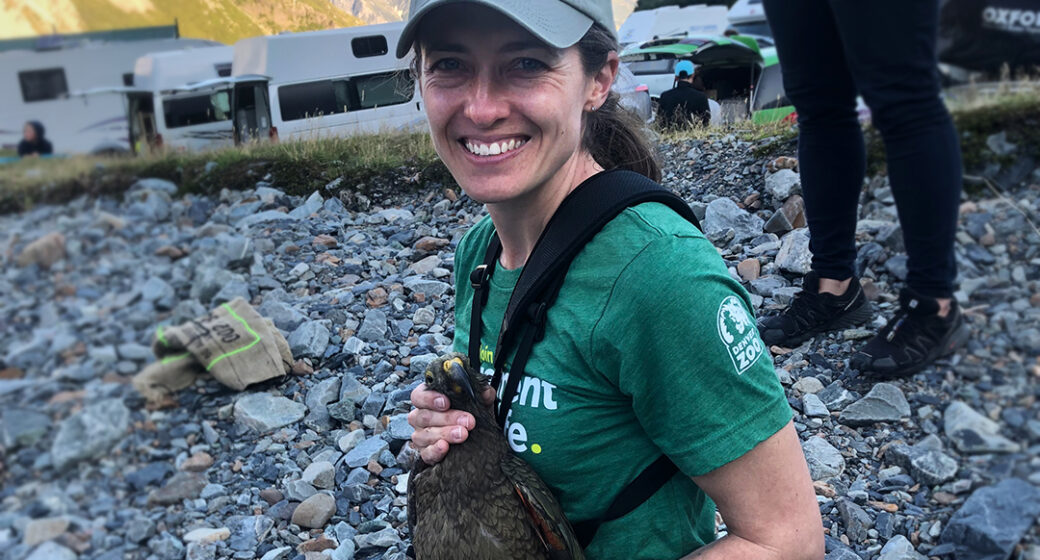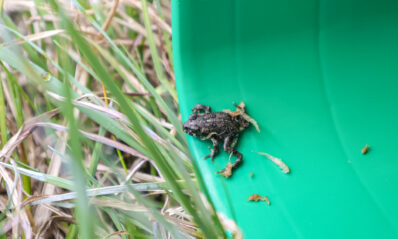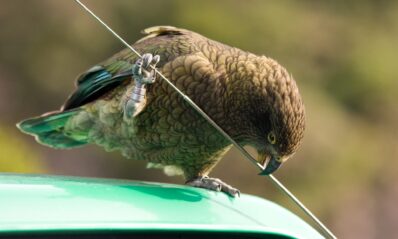
By: Jessica Meehan, Bird Keeper
2020 was a year for the history books. It was a year of struggle and hardship, but also determination and ingenuity. Throughout it all, Denver Zoo remained dedicated to wildlife conservation, in any form possible. Despite a ban on travel and significant budget cuts, Denver Zoo continued its support for the Kea Conservation Trust (KCT) for the third year in a row, albeit in a different way than years past. Kea are an endangered parrot species native to New Zealand. You can see them right here at Denver Zoo on the Avian Propagation Center’s Nurture Trail near Lorikeet Adventure throughout the winter (This alpine species loves the cold, so they’re a great one to see even on those chilly days). In addition to breeding the species to support the small North American zoo population, Denver Zoo provides funding to the KCT for their work in New Zealand. Funding has been used to purchase radio transmitters that are specially designed for kea to wear, allowing the KCT to track adult females to determine if they are successful in their nesting attempts. These transmitters were deployed in the Murchison Mountains, a region that had been largely unexplored by kea researchers. Denver Zoo funding has also been used to purchase tracking and field equipment, used in projects throughout the island, that previously had to be borrowed from the New Zealand Department of Conservation (DOC). In February 2020, I traveled to New Zealand to assist with the Lead-Free Kea Initiative. Little did I know it would be one of Denver Zoo’s last conservation trips of 2020. Denver Zoo’s commitment to the KCT continues with support for another initiative – a citizen science project called the Kea Sightings Database. This website was created to assist kea researchers by allowing anyone living or traveling on the South Island to enter their kea sightings so trends in population, distribution, migration and individual birds can be tracked. Users can look at recent sightings at their location to see if they are likely to see kea in their region and look up banded kea they see to find out their name and a little about them – so if you saw a kea with the bands “yellow AG on blue” chewing on your shoe, you could find out his name was Jussy! And perhaps most importantly, you could enter the data about your sighting into the database so researchers would know that Jussy was still alive and well. This incredible database isn’t the first to track kea sightings; there are actually 12 years of data from the KCT’s original sightings webpage waiting to be logged into the Kea Sightings Database! It will take many hours, weeks and months to get all of the old sightings entered into the database, and the kea researchers in New Zealand just don’t have the time needed to accomplish this monumental task. Enter Denver Zoo, helping conservation projects from across the world – even during a pandemic! As part of the 2020 grant, Denver Zoo staff are getting paid time to enter historical data into the Kea Sightings Database. This work is critical to expanding our understanding of population trends in this endangered and declining population. Denver Zoo remains committed to conservation even during the toughest of times. Sometimes we have to get creative to find ways to support organizations from afar when travel isn’t possible, and this project shows that it is possible to make a big impact for an endangered species from across the world.








